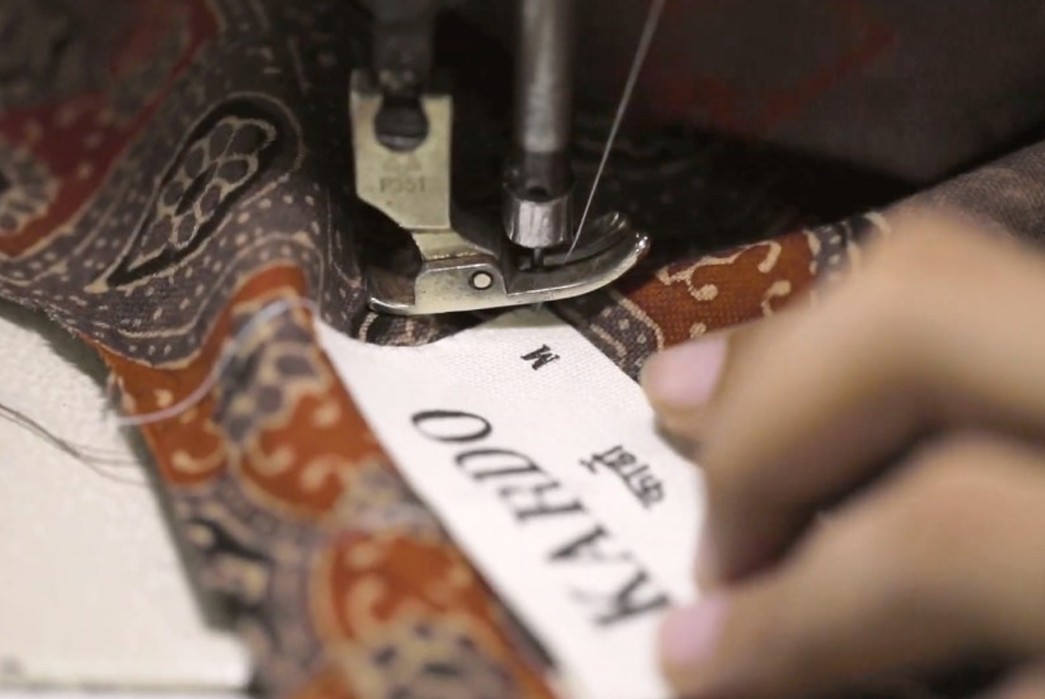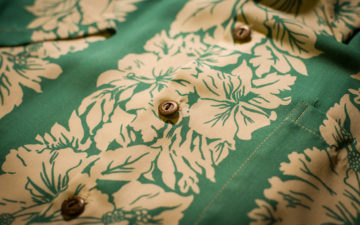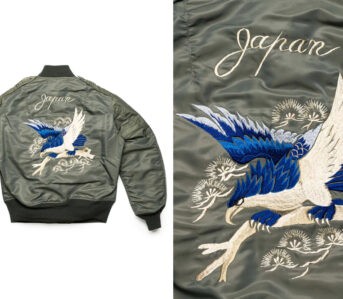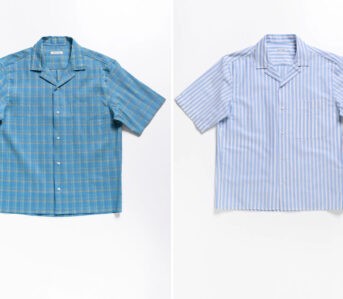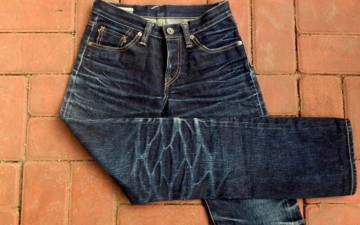Good news first —brand transparency is evolving fast for the first time in the history of the fashion industry. For the past couple of decades, an ever-growing number of fashion-conscious individuals have demanded levels of accountability from the industry and brands have taken notice.
All the dirty little secrets involving environmental and human rights impacts have been coming to light. We fashion enthusiasts are never going to stop loving the clothes and accessories but we ideally don’t want to be the end point of any nefarious practices. The only way to right the wrongs of fashion production is accountability and the only way to get accountability from brands is through transparency.
What Exactly is Transparency?

Indigo-dying shirts by hand. Image via Industry of All Nations.
In short, transparency is a brand providing information about how they work and the impact they have. on the environment, and the people it works with. Creating effective brand transparency is an uphill battle which makes it that much more admirable when brands attempt it and impressive when they do it well. Now that the concept is trending, apparel companies are throwing marketing out there to promote any ounce of transparency they can, whether they’re actually providing it or not. There are smoke screens to be weary of that may look genuine but actually consist of unhelpful jargon. In order to discern the real deal, it is important to understand what exactly fashion brand transparency consists of.
There are four major categories of information that you want to look for:
Production Location
Knowing where in the world a product is made is the best place to start when attempting to understand that product’s manufacturing impact. Different countries have different labor rights, laws, and reputations, as well as standards of product quality. For example, Bangladesh has notoriously poor working conditions and low wages while Vietnam has a reputation for safe working conditions, living wages, and high-quality manufacturing. Of course, every factory in every country is different, but knowing the country of origin gives a general sense of working conditions.
Shopping for locally produced clothing whenever possible is important to alleviate the carbon footprint of getting that clothing to market. You can also get a much clearer picture of working conditions within your own country. If you live in America or the UK, you may have to pay more for domestic products but you are assured of the quality of both the product and the conditions under which it was made.
Labor Practices
Location can give you a general idea but some brands provide specific details about labor practices where their products are made. Exploitative labor in clothing production is no secret, which is why many brands are going out of their way to prove they use sources that treat workers fairly. Unfortunately, specific labor detail is difficult to obtain in many cases. Large brands have to source materials and labor from many locations and deal with third parties that don’t disclose reliable labor information. Smaller companies like startups and modest heritage brands have the flexibility to account for labor, especially if they produce items in-house.
Materials
The materials that a product is made out of can tell a great deal about the impact it has had before it got to you, and will continue to have after you discard it. Artificial materials like polyesters come from petroleum which increases their carbon footprint. They also require a lot of water and chemical runoff to create. Natural plant-based fabrics like cotton and Tencel are renewable but pesticides and exploitative labor may be used during growing and harvesting. Animal materials like wool and leather come with animal welfare concerns.
Every company will list what materials are in a product (if they do not then that is a big red flag) which is the most basic level of brand transparency that has existed for a long time. To expand on this practice, look for brands that explain not only what materials are used but where they come from and take responsibility for conditions where they are made.
Distribution
Distribution information is probably the least transparent aspect of the fashion industry. The two major concerns around how a brand gets its products from manufacturing to the consumer are carbon footprint and waste. The longer the distance and the more steps in the process, the more fuel that is burned and the more opportunities for waste to occur. Traditional retail brands do not disclose distribution information for the most part. Direct to Consumer brands, which have become a sizable part of the industry over the past decade, pride themselves on cutting down distribution complexity. Buying directly from a brand whenever possible is the only sure way to cut back on distribution impact.
The Tangled Webs

The Traditional Fashion Supply Chain. Image via Alvanon.
Now for the bad news, fashion brand transparency is a much trickier concept than it appears to be on the surface. Ideally, the people making the products are treated and paid fairly, while the materials aren’t causing the least environmental impact. In a perfect world, brands would have this information on hand and could easily communicate it to shoppers in concise details on their websites. Unfortunately, the reality of the situation is far more complicated.
Fashion industry supply chains are enormously complicated and opaque by design. Decades of global outsourcing have created a tangled web of production facilities connected to brands through a mind-boggling complex shipping network. In the simplest terms, when a brand wants to produce a product that they have designed, they need to find a factory to produce it and a shipping company to bring it to market. These are often overseas, which makes accounting for details like working conditions and environmental impact extremely difficult. Cheap labor through exploitative practices and lax environmental protection are the reasons that the global fashion supply chain exists in the first place.
Where to Find Transparency Information:
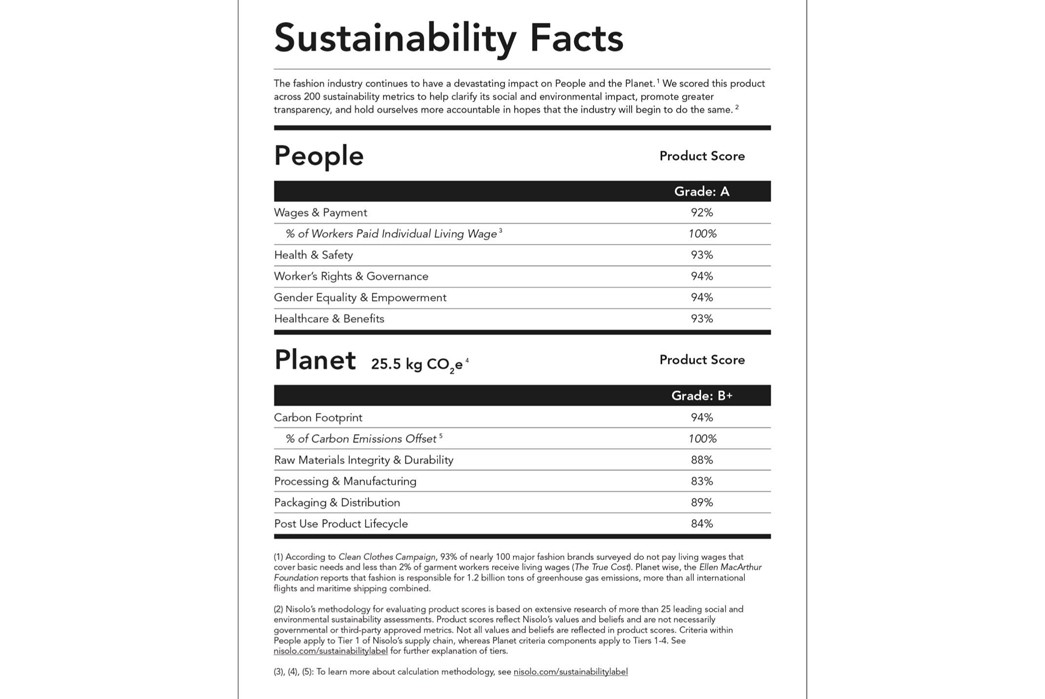
Nisolo’s Sustainability Fact Label. Image via Nisolo.
To find any transparency information that a brand has to offer, you want to look at their website. Third-party retailers will often provide some details on a product page when available but you always want to consult the brand directly. Even if you intend to buy from a particular retailer, search for that product on the brand’s own website first. Information can be found on individual product pages as well as brand information sections, often labeled something like “information,” “our story,” or even “sustainability” at the bottom of the home page.
Here are some examples of brands that are doing transparency really well. Digging into what information they provide and how they provide it will give you a better sense of what to look for in any brand.
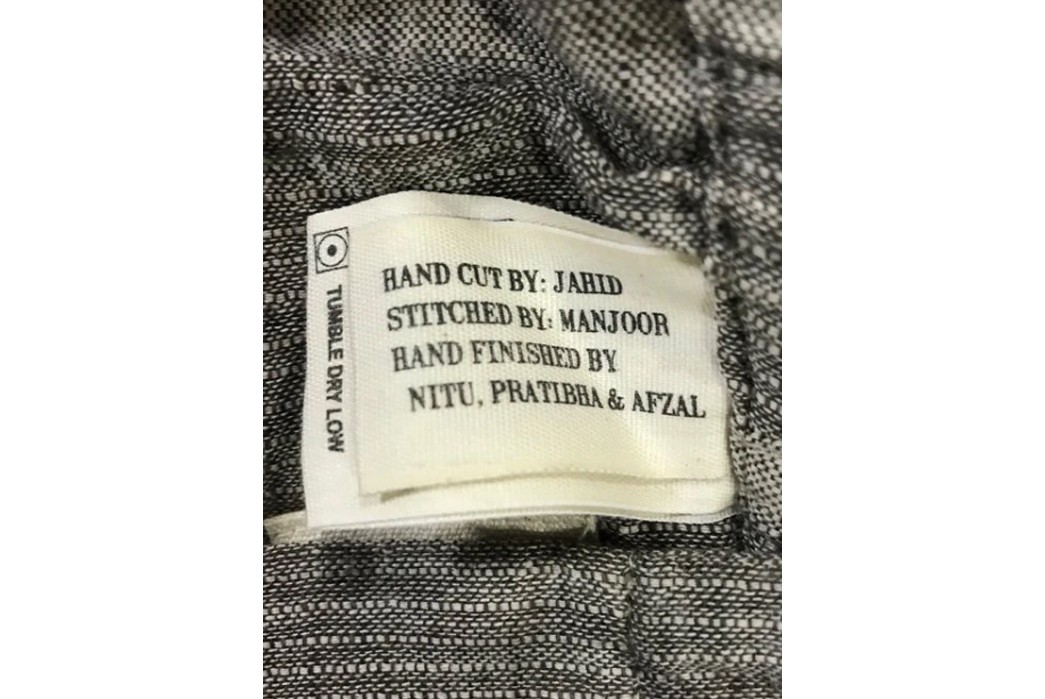
Kardo has transparency information sewn right into their clothing. Image via Kardo.
When it comes to disclosing who made a product and where, Kardo is setting the gold standard. Established in 2013 as an antithesis to fast fashion, the apparel company uses traditional Indian manufacturing techniques passed down for countless generations. Every item is produced using a “ONExONE” process which means a single artisan cuts and sews a garment from start to finish. This technique is commonly known as bench manufacturing. Credit is given to these individuals by having their name printed on a tag sewn into every single Kardo garment.
Headquartered in New Delhi, India, Kardo provides the specific location of where all of their products are manufactured. They also disclose where fabrics are sourced, putting an emphasis on small rural communities in India that maintain textile production techniques that have subsisted for hundreds of years. Many of the patterns and textile designs that exist throughout the fashion industry originated in India. That uniquely rich heritage is not only an inspiration for Kardo but it provides a degree of transparency baked right into the brand’s structure.
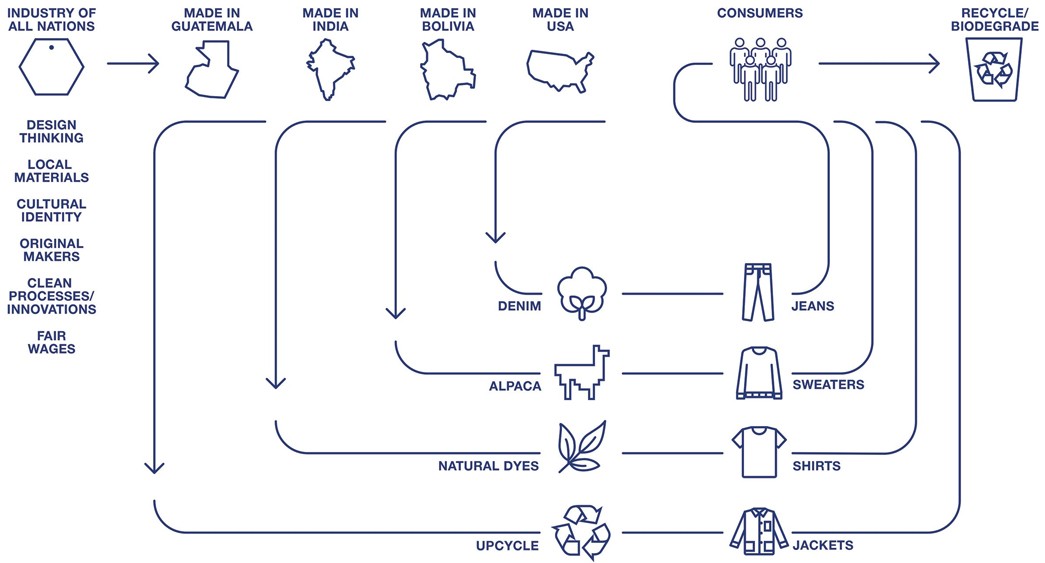
Industry of All Nations provides transparency through simplicity. Image via Industry of All Nations.
Industry of All Nations does a great job of explaining where their materials come from, how they’re made, and the impact it has on the environment and local culture. The company was founded on the principles of sourcing the highest quality materials from around the world and manufacturing them into clothing close to their source. Locally traditional techniques from around the world are used whenever possible as a way of supporting indigenous culture. Every step of the process to create every item, from growing to sewing, is detailed on product pages.
The simple concept of sourcing great materials and then manufacturing them into clothing and accessories using local labor that has been working with those materials for generations is brilliant. This cuts down on carbon emissions from a complex supply chain while supporting often exploited and overlooked people. Keeping the process simple also allows Industry of All Nations to sum up virtually the entire process of every item right on their website.
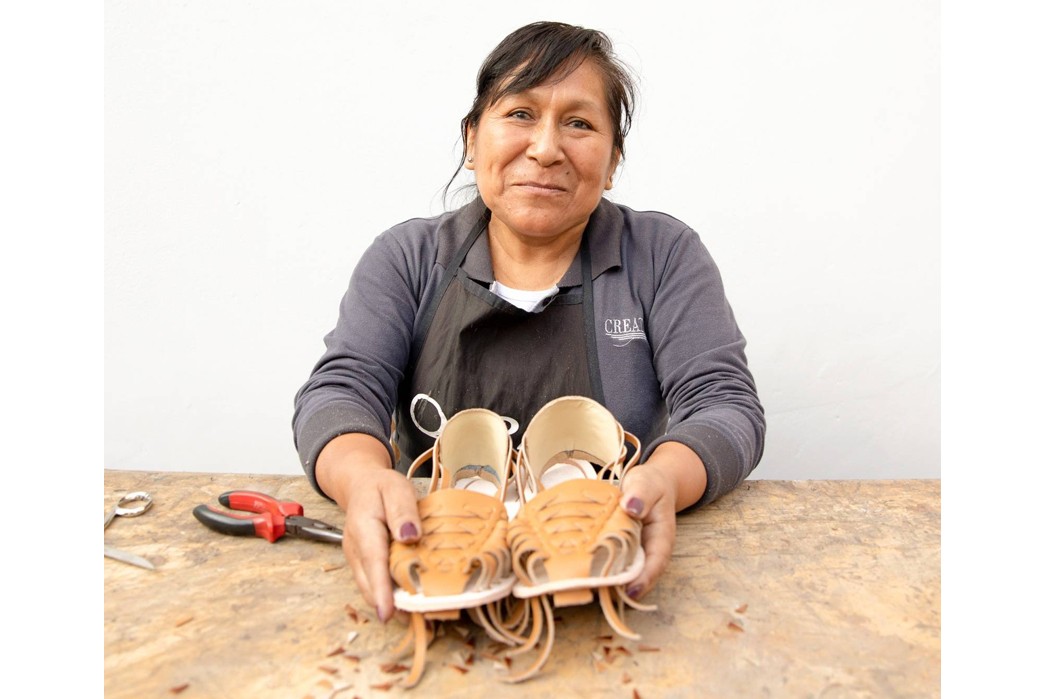
Nisolo provides an unprecedented level of transparency detail. Image via Nisolo.
When it comes to level of detail, Nisolo stands out as a leader in brand transparency. Every aspect of the young brand’s business is anchored in keeping its consumers in the loop on both labor and material information. Details on how the workers that make their products are paid and treated can be found on their website. The impact that the creation of every item has is spelled out in a Sustainability Fact Label – based on food nutrition labels – that comes with each item. An impressive list of certifications on their website proves that their methods have been thoroughly vetted.
Nisolo is a prototype of what fashion brands can look like when transparency is a fundamental principle from the start. The message is clear that the company has nothing to hide and the entire industry should work that way. The desire for transparency is to enforce accountability. Brands won’t pollute the environment and mistreat workers if they know shoppers will find out about it.
A Good Start
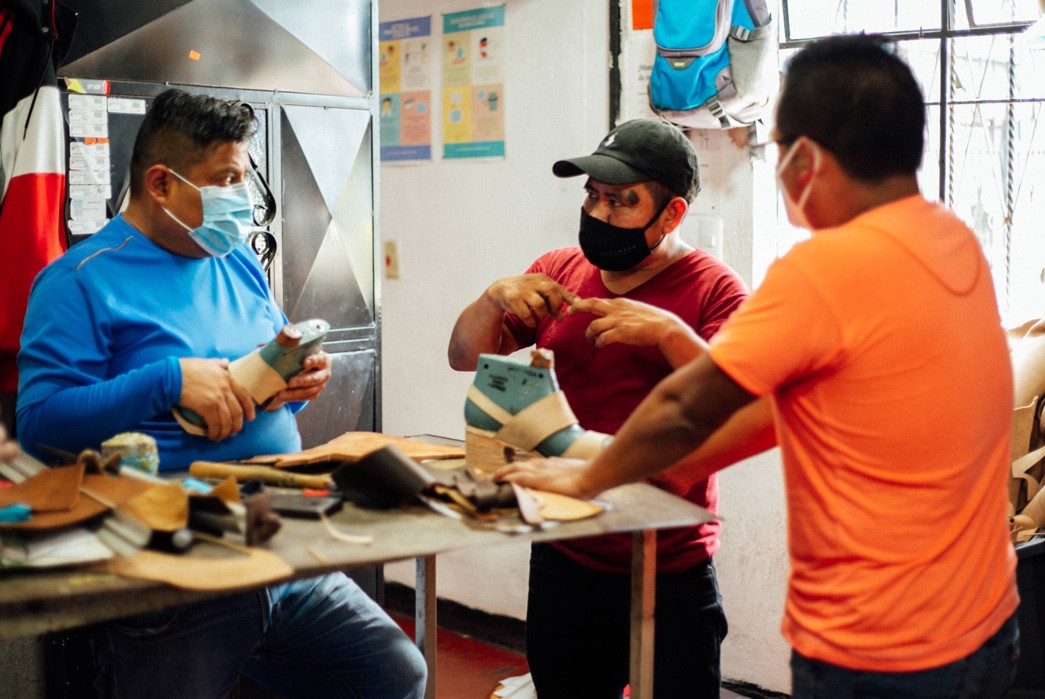
The simple act of showing your workers to the world humanizes the process. Image via Adelante.
While we are finally starting to see a responsible level of transparency in the fashion industry, there is still a long way to go. Decades of reprehensible behavior came to a head during the pandemic and public outcry for change has been undeniable ever since. There are a handful of brands that have been championing accountability for years and they should be praised for setting the example that the entire industry should follow. More importantly, fashion consumers have the responsibility of spending their money on brands that demonstrate transparency. Fashion is a business like any other, meaning that financial pressure is the only way to real change.
Most fashion brands are not as upfront with pertinent information as the aformentioned Kardo, Industry of All Nations, and Nisolo. Each of those young companies were built from the ground up to support transparency. Many well-intentioned brands weren’t built that way, especially any that have been around for more than twenty years. Creating a system that relates information on where their products are made, out of what materials, and by who, can be time-consuming and expensive. That investment will only come if the demand for it is audible.
Calling for increased transparency can be done by commenting on social media and reaching out to brands directly. If you have questions about particular products of business practices, go ahead and ask them. The more brands hear that their clientele are interested in this information as part of their purchase process, the more they will put out there. Clothing and accessories are absolutely fundamental to our self-expression but the time has come to ask the important questions about how it all gets made and what are the repercussions. In short, the more we look for more transparency, the more brands will honor it.

